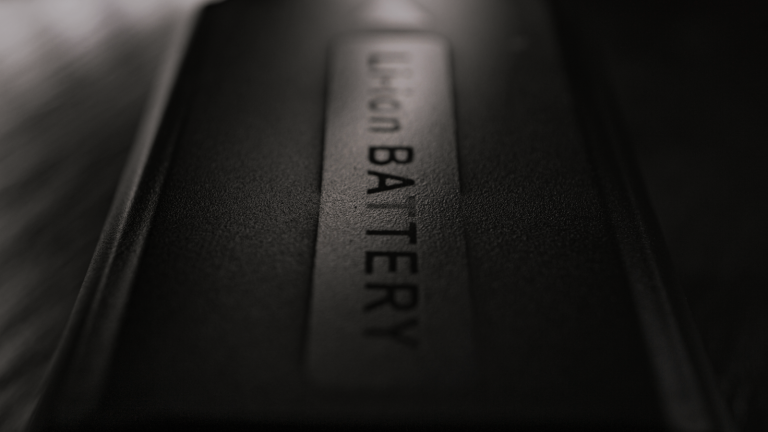Wall Street loves to bury its mistakes.
Right now, lithium is six feet under – entombed by disappointing electric vehicle forecasts, a supply glut, and an entire industry that overshot the runway. The metal that was supposed to power the EV revolution became a cautionary tale; a reminder that hype and reality don’t always align.
Yet, while everyone was writing lithium’s obituary, the story changed completely.
As AI proliferated across the globe, data centers did, too – causing significant stress to the power grid. And the grid has responded by increasingly turning to utility-scale batteries to fulfill outsized power demand.
Indeed, maybe the catalyst wasn’t electric vehicles at all… but artificial intelligence.
Lithium is now being woven into the infrastructure of the AI revolution – not as a supporting player, but as a critical enabler.
This is the Lithium Boom 2.0: deeper, more structural, and potentially far more lucrative.
And it has all the makings of 2026’s breakout AI trade that nobody sees coming.
Lithium 1.0: From Hype to Hangover
Between 2020 and ’22, lithium was a rock star on Wall Street.
EV sales were growing 50%-plus per year. Automakers were panic-signing long-term offtakes, with analysts warning about shortages. Spot prices went vertical. Lithium miners performed like meme stocks but with strong fundamentals.
Then… the hangover.
Central banks around the world hiked interest rates. EV demand growth decelerated. Chinese EV makers were embroiled in a price war. And all the supply that was funded during the boom began entering the market.
As a result, prices collapsed, sentiment evaporated, and lithium went from a can’t-lose EV megatrend play to “why does this still exist in my portfolio?”

Most investors’ lithium outlook is still anchored in this EV-bubble-and-bust narrative.
And that’s exactly why this setup is interesting…
Because the fundamentals are evolving – but the narrative hasn’t caught up yet.
When Lithium Becomes a Part of the AI Power Story
There’s a simple connection it seems most people aren’t making:
- Ever-growing levels of AI compute is massively increasing data center power demand.
- That’s forcing utilities and hyperscalers to restructure the grid with huge amounts of energy storage.
- And the workhorse technology for that storage? Lithium-ion batteries.
In other words… the more AI we deploy, the more electrical stress on the grid, the more batteries we need. And the more batteries we need, the more lithium we consume.
Now picture where that demand is coming from – AI’s industrial heart: data centers. Massive, always-on, power-hungry facilities that can’t afford a single flicker. That’s a perfect use case for:
- Utility-scale battery farms
- On-site data center battery systems for backup and smoothing
- Behind-the-meter storage that lets hyperscalers arbitrage prices, shave peaks, and survive the next heat wave or storm
This is the first big leg of Lithium 2.0 demand. And we’re very early in that transition.
Most investors are still thinking: ‘Lithium = EVs. EV growth slowed = lithium bad.’
The emerging reality is closer to: ‘Lithium = EVs plus AI-driven energy storage. EVs are a little slower, but the grid and data centers are picking up the slack.’
If that’s true – and the data is increasingly suggesting as such – then the EV bust may have created one of the best entry points into a still-growing lithium demand curve.
The Next Act: Lithium for Physical AI
The second leg of Lithium 2.0 is more speculative in the short term but potentially enormous in the long term – its role in Physical AI.
As the robotics industry continues to grow, AI is increasingly moving from the cloud to the real world via robotaxis, warehouse and delivery bots, drones, industrial cobots, AI glasses and wearables… even humanoid robots like Tesla‘s (TSLA) Optimus or Unitree‘s various humanoid offerings. And each requires a battery pack to function as intended.
Individually, none of these categories rival the energy demand of EVs or grid storage in the next one to three years. A humanoid robot might use a 2–3 kWh pack – a lot less than a 70 kWh EV. By comparison, AI glasses’ battery packs are microscopic.
But that misses the point.
This isn’t about any one category. It’s about the stack: Robotaxis + warehouse bots + delivery bots + industrial cobots + humanoids + whatever else we dream up next.
In 2026, this shows up as a narrative tailwind and a fast-growing but still small-volume contributor.
By the 2030s, it could become a meaningful second demand pillar on top of EVs and energy storage systems (ESS) – especially if humanoids and logistics bots hit scale.
We don’t need that whole physical AI future to materialize immediately in order to justify higher lithium prices. We just need the forward expectations to reset around lithium being more than just an ‘EV metal.’
And that’s exactly what’s starting to happen.
Busted Narrative, Emerging Tailwind
Why could Lithium 2.0 break out around 2026? Because the setup checks every box for a major rotation:
- Sentiment is still broken. Investors remember the crash and the false ‘shortage forever’ story. Most have mentally written lithium off – which is exactly when value quietly rebuilds.
- AI-driven demand is early but real. Hyperscalers are planning gigawatts of new data-center load. Utilities are scrambling for grid flexibility, and battery makers are scaling both EV and stationary storage lines. Even modest AI-energy demand shifts the math: lithium is diversifying.
- Supply discipline is back. Post-crash, projects were delayed or shelved, and capex slashed. If AI storage demand ramps into that backdrop, today’s ‘oversupply’ can flip to shortage fast.
- Policy adds another push. Governments want secure, local, AI-proof supply chains. Lithium sits squarely in that mandate across the U.S., Canada, and Australia.
Together, those forces mark the early innings of a new demand cycle: one driven less by EV hype and more by the AI Energy Crunch and Physical AI buildout.
How to Trade the Lithium 2.0 Rotation
Now, it’s important to note that the Lithium Boom 2.0 won’t be a smooth glide higher.
This is a commodity cycle, not a near-guaranteed software-as-a-service (SaaS) ramp. Expect volatility, headlines about oversupply, and alternative battery news to spook the tape. But zoom out:
- Big picture: Lithium’s story is evolving from single-thread EV exposure to a multi-leg EV + ESS + AI grid thesis – raising and diversifying long-term demand.
- Cycle check: Prices crashed, capex collapsed, sentiment died. That’s what bottoms look like before a new narrative takes hold.
- Strategy: Accumulate into fear, trim into euphoria. Focus on producers with real assets, scale, and strategic locations governments need online.
Lithium 1.0 was the EV revolution. Lithium 2.0 is the AI-energy revolution, where data centers, robots, and electric grids all compete for limited power.
If 2023 was all about GPUs and 2025 was centered around rare earths, 2026 could be remembered as the year lithium became the next great AI trade.
Though, it’s not the only lucrative AI play flying under many investors’ radar…
Silicon Valley is known to be a global hub of tech and innovation. It’s the place some of the most powerful companies in the world call home – Apple (AAPL), Alphabet (GOOGL), Meta (META) – as well as a wealth of VC and startups known for rapid scale and ingenuity.
And this crossroads of tech and talent is exactly where I’ve spotted the most innovative AI-driven company I’ve ever seen – one that’s using AI to disrupt a massive $1.9 trillion industry that hasn’t changed in decades.
Yet, it’s trading for less than $10… meaning it could be the next 1,000%-plus AI winner.
Find out how to back the next Bezos or Musk – without being in Silicon Valley.

